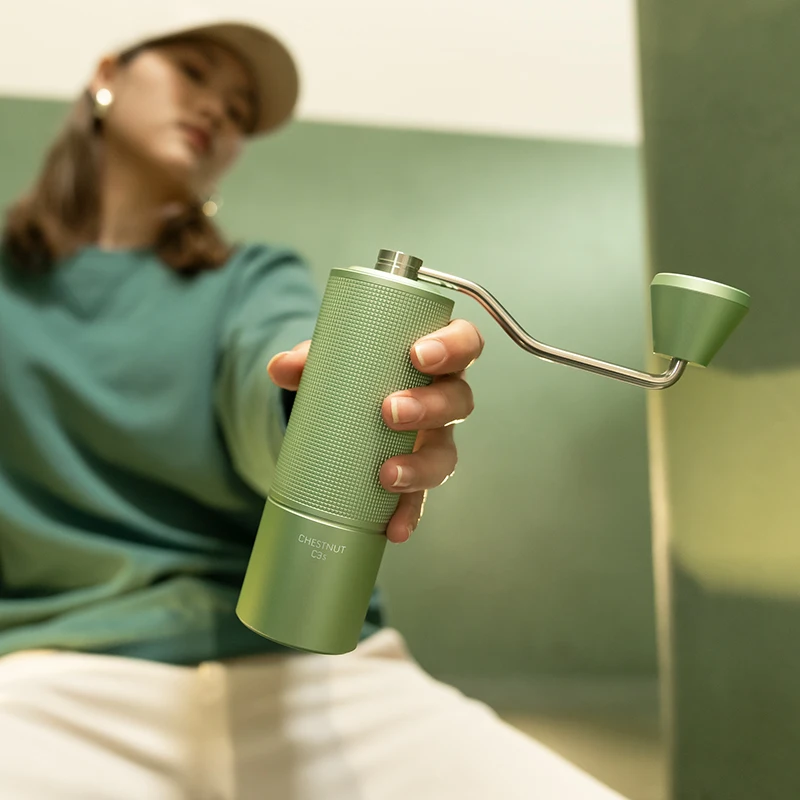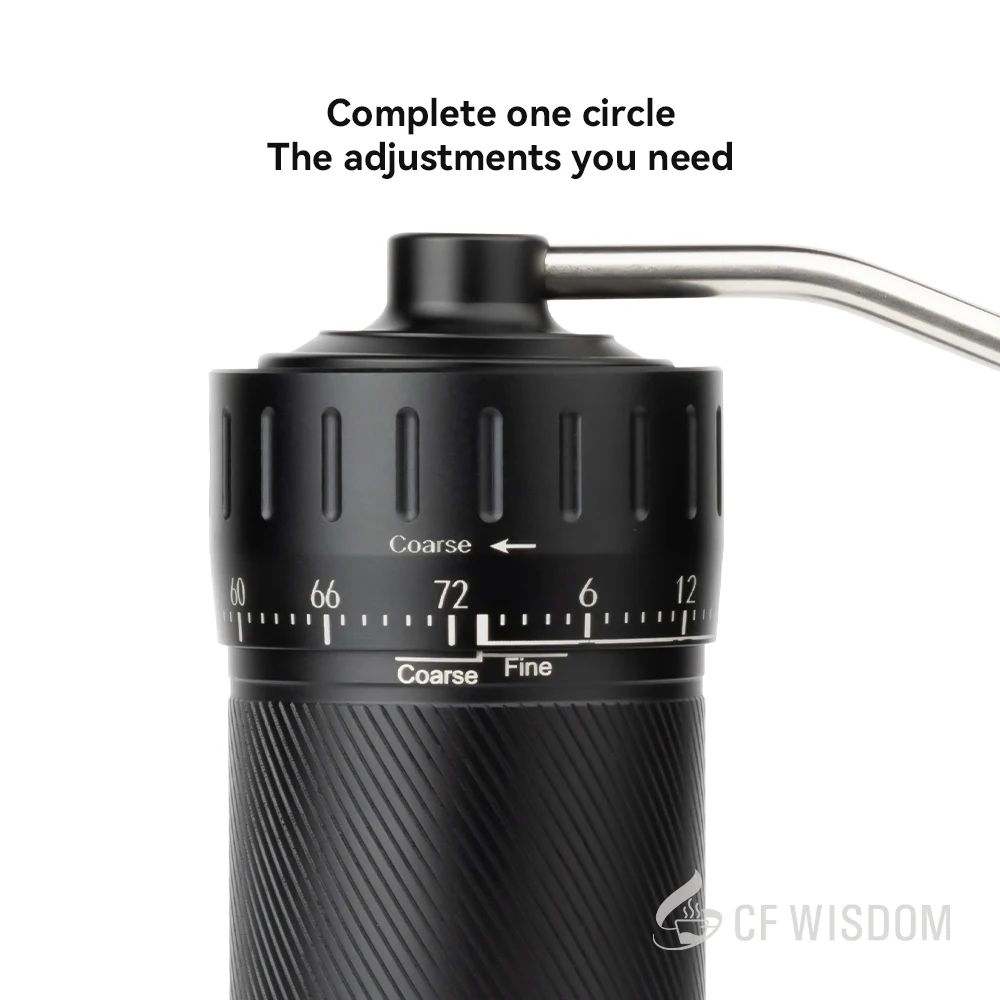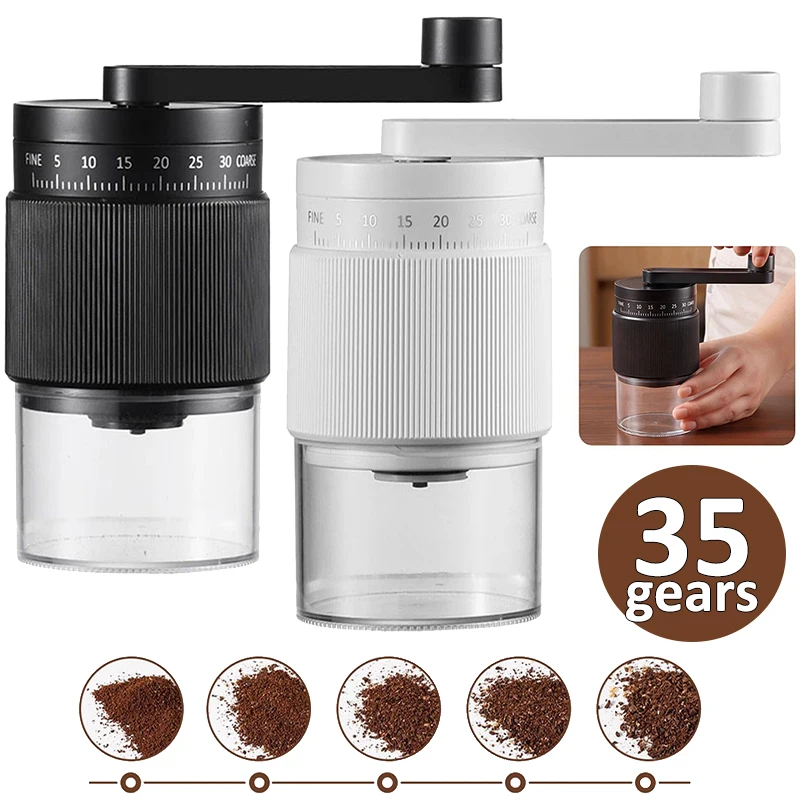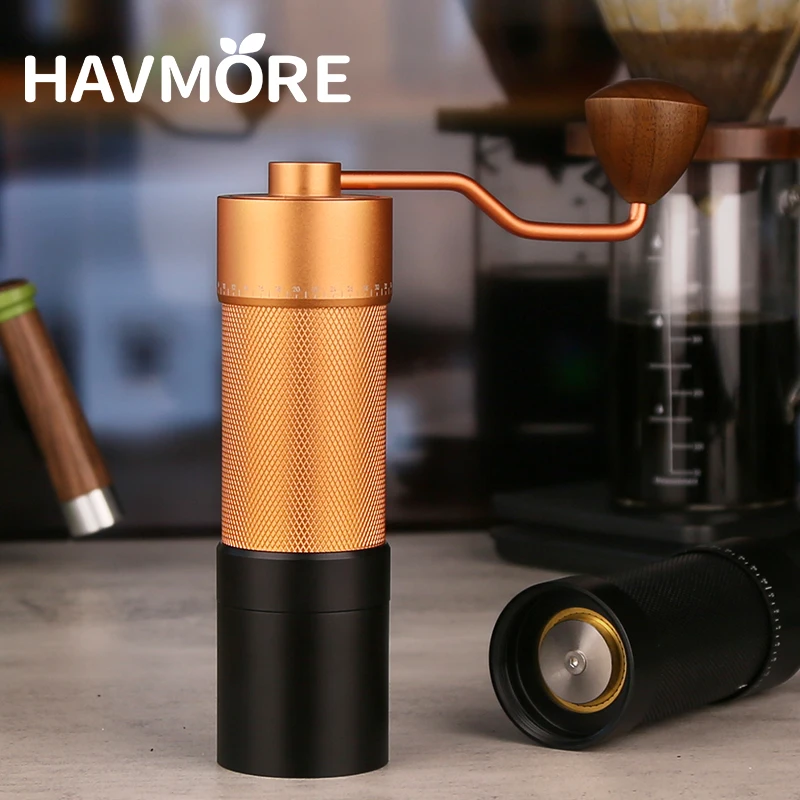Why Your Manual Coffee Grinder Deserves Proper Care
A manual coffee grinder represents more than just a tool for coffee preparation—it’s an investment in your daily brewing ritual. These precision instruments transform whole beans into perfectly sized grounds through hand-powered burr mechanisms, delivering control that electric alternatives often can’t match. When you properly care for your manual grinder, you’re protecting both your financial investment and your morning coffee experience.
Taking time to maintain your grinder offers several key benefits:
- Economic value: A well-maintained grinder can serve you faithfully for 5-10 years or more, saving hundreds over replacing cheaper models repeatedly
- Consistent quality: Proper care ensures your grind remains uniform, directly impacting extraction and flavor
- Sustainability: By extending your grinder’s life through maintenance, you reduce waste and consumption
- Performance reliability: Regular maintenance prevents unexpected breakdowns during your morning routine
The difference between maintained and neglected grinders becomes apparent quickly. While a well-kept grinder continues producing consistent grounds year after year, neglected ones develop irregular particle sizes, contaminating flavors, and mechanical issues that compromise your brew. Throughout this guide, we’ll explore comprehensive maintaining manual coffee grinders strategies to keep your prized tool performing at its best.
Many coffee enthusiasts wonder do coffee grinders need maintenance at all. The answer is unequivocally yes—especially for manual models where each component directly affects your grinding experience and coffee quality.
Understanding Your Manual Grinder’s Anatomy
Before diving into maintenance procedures, familiarizing yourself with your grinder’s key components helps you provide targeted care where it matters most:
Critical Components:
– Burrs: The star performers that actually cut and grind your beans, typically made from either ceramic or steel
– Central shaft: The axle that holds and aligns your burrs
– Bearings: Allow smooth rotation of the grinding mechanism
– Adjustment mechanism: Controls your grind size from fine espresso to coarse French press
– Handle and crank: The power source that transfers your energy to the grinding process
– Housing/body: Protects internal components and catches ground coffee
The choice between ceramic vs steel grinder burrs significantly impacts maintenance needs. Ceramic burrs stay sharp longer but are more brittle and prone to chipping if a foreign object enters the grinder. Steel burrs may require occasional sharpening but withstand more abuse and are less likely to break.
Material construction also determines maintenance requirements. Many premium manual coffee burr grinders feature combinations of:
– Stainless steel bodies (resistant to corrosion but require polishing)
– Aluminum components (lightweight but can oxidize)
– Wood elements (beautiful but need protection from moisture)
– Plastic/polymer parts (durable but can absorb odors)
Common wear points requiring special attention include the burr edges, shaft alignment points, and adjustment mechanisms where metal-on-metal contact occurs during operation.
Essential Cleaning Routines: Your Maintenance Schedule
Regular cleaning prevents several major issues that can shorten your grinder’s lifespan. Coffee oils turn rancid over time, introducing off-flavors to fresh beans. Tiny coffee particles accumulate in mechanisms, creating resistance and uneven wear. A consistent cleaning schedule prevents these problems while extending your grinder’s useful life.
Implement this three-tier maintenance approach:
Daily Quick Maintenance (5 minutes)
– Brush visible grounds from burrs and collection chamber
– Wipe external surfaces with a dry cloth
– Tap grinder gently to dislodge trapped particles
– Leave disassembled briefly to air out
Weekly Basic Cleaning (15 minutes)
– Partial disassembly of the grinding chamber
– More thorough brushing of internal components
– Inspection of burrs for residue buildup
– Check adjustment mechanism for smooth operation
Monthly Deep Clean (30-45 minutes)
– Complete disassembly according to manufacturer guidelines
– Thorough cleaning of all components
– Inspection for wear and damage
– Realignment and calibration of grinding mechanism
Watch for these signs indicating your grinder needs immediate cleaning regardless of schedule:
– Inconsistent grind sizes
– Unpleasant odors when grinding
– Visible coffee oil residue
– Increased resistance during grinding
– Strange noises during operation
Understanding how often to clean manual coffee grinder components is crucial—some parts need attention after every use, while others can go longer between cleanings. Different hand burr grinder models may have specific requirements, so consult your user manual for manufacturer recommendations.
Thorough manual burr coffee grinder cleaning preserves not just the mechanism but also the purity of flavor in your cup. Coffee oils become stale and rancid over time, and even small amounts can taint fresh beans with off-flavors.
Deep Cleaning Process: Step-by-Step Guide
When performing a comprehensive cleaning of your manual grinder, gather these essential tools:
– Soft bristle brushes (new paintbrushes or dedicated coffee brushes)
– Microfiber cloths
– Cotton swabs for tight spaces
– Food-safe, odorless cleaner (unscented dish soap diluted in water)
– Compressed air (optional)
– Small bowl for organizing tiny parts
– Toothpicks for precision cleaning
Step 1: Preparation and Documentation
Before disassembly, take photos of your assembled grinder from multiple angles. This provides reference for reassembly, especially important for complex models.
Step 2: Systematic Disassembly
1. Remove the handle/crank mechanism
2. Open the hopper and remove any remaining beans
3. Separate the adjustment dial/settings mechanism
4. Carefully extract the inner burr and shaft
5. Remove the outer burr if design allows
6. Place small parts in a container to prevent loss
Step 3: Material-Specific Cleaning
For Ceramic Burrs:
– Brush thoroughly with a dry brush
– For stubborn residue, use a damp cloth very sparingly
– Never soak or immerse in water
– Allow to dry completely before reassembly
For Steel Burrs:
– Brush thoroughly to remove all grounds
– Wipe with barely damp cloth if needed
– Dry immediately and thoroughly to prevent rust
– Consider a tiny amount of food-safe mineral oil for rust protection
For Wood Components:
– Wipe with soft, dry cloth only
– Never submerge in water
– Apply food-safe wood conditioner sparingly if recommended by manufacturer
– Address stains with gentle buffing
For Metal Parts:
– Clean with slightly dampened cloth
– Dry thoroughly to prevent oxidation
– Polish with appropriate metal cleaner if appearance is affected
– Check for burrs or damage that might affect performance
Step 4: Drying and Conditioning
Allow all parts to air dry completely for at least 1-2 hours. Even slight moisture can lead to rust on steel components or swelling in wooden parts.
Step 5: Reassembly with Precision
1. Start with the outer burr, ensuring proper seating
2. Insert shaft and inner burr, checking alignment
3. Reassemble adjustment mechanism, confirming smooth operation
4. Attach handle and test rotation before using with beans
When performing essential steps deep clean hand coffee grinder procedures, pay special attention to the burr alignment during reassembly. Misaligned burrs create inconsistent grinds and unnecessary wear. For stainless steel manual coffee grinders, take extra precautions to ensure complete drying to maintain their corrosion resistance.

Proper Grinding Techniques That Extend Lifespan
The way you use your grinder daily directly affects its longevity. Proper technique reduces strain on components while improper usage accelerates wear.
Bean Selection and Preparation
| DO | DON’T |
|---|---|
| Use clean, dry beans free of foreign objects | Grind extremely oily or flavored beans without extra cleaning |
| Allow freshly roasted beans to degas for 3-7 days | Put beans with obvious stones or debris into your grinder |
| Measure beans accurately to avoid overloading | Fill beyond recommended capacity |
Grinding Motion and Force
| DO | DON’T |
|---|---|
| Use smooth, consistent rotation | Apply excessive downward pressure |
| Maintain vertical alignment of the grinder | Grind at awkward angles that stress the shaft |
| Support the grinder body with your non-cranking hand | Jerk or force the handle when resistance increases |
| Use moderate speed with consistent rhythm | Rush through grinding with excessive force |
Adjustment Practices
| DO | DON’T |
|---|---|
| Make adjustments when burrs are empty | Change settings while beans are in the burrs |
| Move gradually between extreme settings | Force adjustment mechanisms beyond their limits |
| Note successful settings for future reference | Make radical adjustments without tracking changes |
Lubricating hand coffee grinder burrs occasionally with appropriate food-safe lubricants can reduce friction and extend burr life, but only when specifically recommended by manufacturers. Most precision manual grinder models have specific guidance on whether lubrication is beneficial or harmful for their particular design.
Smart Storage Practices for Between-Use Protection
How and where you store your grinder between uses significantly impacts its condition. Proper storage prevents environmental damage and preserves both functionality and appearance.
Ideal Storage Conditions:
– Cool, dry environment with minimal temperature fluctuations
– Away from direct sunlight that can fade materials and degrade wooden components
– Distant from moisture sources like sinks, windows, or humidifiers
– Protected from cooking oils and spices that can contaminate the grinder
– Stable position that prevents accidental falls
Short-Term Storage Preparation:
– Leave hopper empty of beans to prevent oil transfer and staling
– Position upright on a stable surface
– Consider a simple cloth cover to prevent dust accumulation
– Store in a cupboard rather than countertop if possible
Long-Term Storage (Vacations/Extended Non-Use):
– Perform a complete cleaning before storage
– Ensure all parts are thoroughly dry
– Disassemble partially to prevent pressure on bearings
– Store components in a breathable container
– Consider silica gel packets for humidity control in damp environments
Specialized travel coffee grinder models often include protective cases or features designed specifically for safe transport and storage. These features help prevent damage when the grinder is packed in luggage or carried in outdoor settings.
Fine Adjustment Hand Grinder, Precision Manual Grinder, Travel Coffee Grinder
Price range: $185.11 through $494.63 Select options This product has multiple variants. The options may be chosen on the product pageHand Burr Grinder, Hand Crank Coffee Grinder, Manual Espresso Grinder, Portable Coffee Grinder
Price range: $262.72 through $300.22 Select options This product has multiple variants. The options may be chosen on the product pageManual Burr Mill, Manual Coffee Grinder Stainless Steel, Manual Coffee Mill Grinder, Mechanical Coffee Grinder
Price range: $127.26 through $130.32 Select options This product has multiple variants. The options may be chosen on the product pageHand Burr Grinder, Manual Coffee Grinder Stainless Steel, Precision Manual Grinder
Price range: $183.64 through $187.52 Select options This product has multiple variants. The options may be chosen on the product page
Material-Specific Maintenance Approaches
Different grinder materials require specialized care approaches to maintain their integrity and performance over time.
Ceramic Burr Maintenance
Ceramic burrs offer exceptional hardness and longevity but require gentle handling to prevent damage:
– Clean with soft brushes only, avoiding metal tools that can chip edges
– Never drop or subject to impact as ceramic can crack or chip
– Inspect regularly for tiny fractures that can affect grind consistency
– Cannot be resharpened when worn – replacement is necessary
Steel Burr Preservation
Steel burrs provide durability but require protection from moisture:
– Dry thoroughly after cleaning to prevent rust formation
– Consider applying minimal food-grade mineral oil if recommended
– May develop slight patina with use that doesn’t affect performance
– Can potentially be resharpened by professionals when worn
Wood Body Care
Wooden components add aesthetic appeal but require special attention:
– Clean with dry or barely damp cloth only
– Apply food-safe wood conditioner occasionally
– Keep away from moisture sources completely
– Monitor for cracking in dry environments
– Address water spots immediately by gentle buffing
Metal Body Upkeep
The understanding stainless steel coffee grinder durability is essential for proper care. Metal grinder bodies benefit from:
– Regular wiping with appropriate metal cleaners
– Polishing to remove fingerprints and maintain appearance
– Checking for corrosion at connection points
– Ensuring complete drying after any contact with water
Plastic/Polymer Component Care
Plastic elements require attention to prevent degradation:
– Avoid harsh chemicals that can cause brittleness
– Keep away from heat sources that could warp components
– Clean with mild soap only when necessary
– Monitor for stress cracks around connection points
Ceramic burr coffee grinder models have specific care requirements to preserve their cutting surfaces, which differ significantly from metal alternatives. Regular assessment of component condition helps identify maintenance needs before performance suffers.

Troubleshooting Common Performance Issues
Even with regular maintenance, manual grinders occasionally develop performance issues. Identifying and addressing these problems promptly prevents further damage.
Inconsistent Grind Size
Problem: Coffee grounds vary widely in size despite consistent settings.
Solution:
– Check burr alignment and ensure secure mounting
– Inspect for bean fragments lodged between burrs
– Assess burrs for uneven wear or damage
– Verify stability of adjustment mechanism
– Clean thoroughly to remove particle buildup
Binding or Stiff Grinding
Problem: Handle becomes difficult to turn or binds during operation.
Solution:
– Disassemble and clean thoroughly to remove coffee oils
– Check for foreign objects between burrs
– Ensure proper reassembly with aligned components
– Verify bearings are clean and unobstructed
– Consider appropriate lubrication if manufacturer-approved
Wobbling Handle or Shaft
Problem: Handle or central shaft feels loose or wobbles during grinding.
Solution:
– Tighten connection points where possible
– Check for worn bushings or bearings
– Inspect handle attachment point for damage
– Verify shaft alignment is centered
– Replace worn components if available
Excessive Noise
Problem: Grinding produces unusual or excessive noise.
Solution:
– Identify source of noise through systematic testing
– Check for loose components or connections
– Ensure burrs are properly seated and aligned
– Look for foreign objects in grinding mechanism
– Verify appropriate lubrication if applicable
Slipping Grind Adjustment
Problem: Grind setting changes during use.
Solution:
– Clean adjustment threading thoroughly
– Check for worn or stripped threads
– Verify tension system is functioning properly
– Consider adding approved thread locker if recommended
– Replace adjustment mechanism if beyond repair
For many popular grinders, manual coffee grinders replaceable burrs make repairs simpler and more cost-effective than full replacement. Models with fine adjustment hand grinder mechanisms may require more frequent calibration to maintain precision.
When to Replace Parts vs. When to Replace Your Grinder
Even with excellent maintenance, certain components eventually require replacement. Knowing when to repair versus replace helps you make cost-effective decisions.
Signs Burrs Need Replacement:
– Visibly damaged or chipped cutting edges
– Inability to achieve fine grind settings
– Consistently uneven particle sizes despite cleaning
– Excessive heat generated during grinding
– Greatly increased grinding time for the same quantity
Typical Burr Lifespan Expectations:
– Home use with premium ceramic burrs: 5-10 years
– Home use with quality steel burrs: 3-7 years
– Heavy daily use (multiple grinds daily): 1-3 years
– Commercial or shared usage: 6 months to 1 year
Finding Compatible Parts:
– Contact manufacturer directly for authentic replacements
– Check specialty coffee retailers for common replacement parts
– Consider universal parts only when exact specifications match
– Document model numbers and measurements before ordering
Repair vs. Replace Decision Framework:
– Replace parts when: cost is less than 40% of new grinder, grinder is otherwise in good condition, parts are readily available
– Replace grinder when: multiple components failing, parts exceed 40% of new grinder cost, newer models offer significant improvements
Understanding how long manual coffee grinders last helps set realistic expectations. Most quality manual grinders should provide 5-10 years of reliable service with proper maintenance and occasional part replacement.
FAQs: Your Manual Grinder Maintenance Questions Answered
Can I use coffee cleaning tablets in my manual grinder?
No, these tablets are designed for automatic machines and may leave residue in manual grinders. Stick to brushes, cloths, and mild soap when necessary.
Is it safe to use rice for cleaning manual grinders?
This is generally not recommended. While rice can absorb oils, it’s harder than coffee beans and may damage burrs or misalign components. Best manual grinder cleaning brushes are a safer, more effective option.
How frequently should I replace burrs with normal home use?
With daily home use (1-2 grinds per day), quality burrs typically last 3-7 years. Steel burrs generally require replacement sooner than ceramic ones. Watch for symptoms like inconsistent grinds and significantly longer grinding times.
Can I wash any parts of my manual grinder in the dishwasher?
Generally no. The heat, moisture, and harsh detergents can damage all common grinder materials. Manual cleaning is always safer.
What should I do if my grinder develops rust?
For light surface rust on steel components, gently remove it with a soft cloth and food-safe rust remover. Apply food-grade mineral oil afterward. For severe rust, component replacement may be necessary.
Are there differences in maintaining travel vs. home grinders?
Travel grinders require more frequent inspection since they experience more movement and potential impacts. Focus on keeping connections tight and checking for alignment issues regularly in all-metal hand grinder models designed for portability.
How do I know if my burrs are still sharp enough?
When burrs dull, you’ll notice increased grinding time, more inconsistent particle sizes, and difficulty achieving fine grinds. If your grinder used to take 30 seconds for a dose but now takes a minute for the same amount, burr replacement is likely needed.

A well-maintained manual coffee grinder does more than just last longer—it consistently produces the perfect grind your brewing method demands. By following the care practices outlined in this guide, you’ll preserve your grinder’s performance for years of enjoyable coffee experiences.







